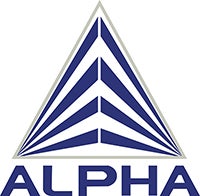Founded in 1982, Alpha Insulation & Waterproofing Inc. has over three decades of experience in commercial insulation, waterproofing, fireproofing, and fire stopping. In 2017, the company was acquired by Installed Building Products, Inc., which helped IBP expand into the large commercial construction market as a complement to its residential base.
IBP veteran employee Scott Lyons, who helped take IBP public and led IBP’s business development team through 40 acquisitions, including the Alpha Insulation & Waterproofing acquisition, was named Alpha’s VP of Process Improvement.
At the time of the IBP acquisition, Alpha Insulation & Waterproofing operated nine branches in Georgia, Florida, Texas, Tennessee, and North Carolina. The company ran on a project management and financial system for construction firms, but it wasn’t a good fit, says Lyons.
Unreliable Legacy System Crashed Often
The multi-tenant legacy system often crashed without notice, and users in the field found it unreliable, so they did not use it to the extent required. Instead, they relied on phone calls to the finance team to provide the required information.
More importantly, the legacy system was not SOX compliant. The Securities and Exchange Commission requires an annual audit of public companies and its divisions to prove accurate, data-secured financial reporting.
“We calculated everything manually,” says Cassandra Moore, Alpha’s Director of Accounting. “We literally downloaded data and had a shadow system to be efficient.”
She spent half a day downloading and compiling data plus an entire day to create the required reports to calculate work-in-progress (WIP) or percentage of completion for construction each month. WIP reports provide a real-time snapshot of open construction job status and what is coming up. To create them, you need accurate, complete, and timely data.
When project managers in the field needed financial data on their construction projects, they called Moore’s small team. “We spent a lot of time with the field explaining where their numbers came from,” she says.
Extensive Research into Operations, Workflow
Realizing the current system didn’t work, Lyons and Moore spent considerable time assessing the company’s needs and researching potential solutions. They discussed the entire revenue cycle including the bid-to-build process, billing procedures, and how to incorporate estimating software and other construction-specific products and applications with representatives from every department.
They mapped out and studied AP processes, including how they solicited bids for materials, how to obtain pricing for purchase orders, how to receive materials, and what impact these activities had on inventory. “We also asked all those questions for the field side of the business and then determined if items were a need or want,” Lyons says. “We came up with a comprehensive list of requirements and then carefully evaluated each potential application to identify the best possible fit for our business.”
Some software vendors told Alpha they could not meet its requirements, while others said the company was too large for their application. So, the team narrowed its list to five potential applications asking each vendor to provide a thorough demo. Applications were removed from consideration because they could not support the needs of subcontractors or were not SOX compliant.
“Being SOX compliant was very important to us,” Lyons says. “If you don’t have those required reports, it’s much more difficult to get through an audit.”
Alpha also needed to streamline product receipts and job costs that flow through to inventory and specific jobs. “Our prior software didn’t do a good job of that,” Lyons says.
 Canada (English)
Canada (English)
 Colombia
Colombia
 Caribbean and Puerto Rico
Caribbean and Puerto Rico
 Ecuador
Ecuador
 India
India
 Indonesia
Indonesia
 Ireland
Ireland
 Malaysia
Malaysia
 Mexico
Mexico
 Panama
Panama
 Peru
Peru
 Philippines
Philippines
 Singapore
Singapore
 South Africa
South Africa
 Sri Lanka
Sri Lanka
 Thailand
Thailand
 United Kingdom
United Kingdom
 United States
United States








